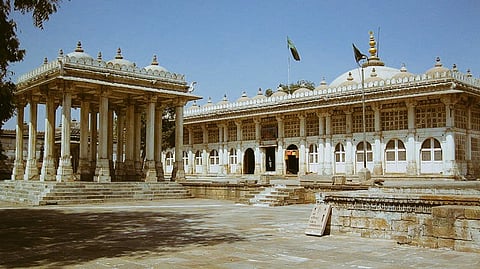A living legacy of Sufiism, the majestic Sarkhej Roza of Ahmedabad offers a divine experience
A result of exquisite craftsmanship and remarkable architectural work, the mausoleum of Sarkhej Roza is a 572-year-old living legacy carrying within it rich anecdotes of Sufiism.
The 15th century shrine of the celebrated Sufi saint Shaikh Ahmad Khattu or Ganj Baksh (name conferred in honour of his generous nature) is a standing marvel that renders to its visitors an experience divine.
History of the majestic Sarkhej Roza
Often referred to as the Acropolis of Ahmedabad, a comparison made by the seminal Swiss-French architect Le Corbusier, this dargah had once served as a retreat for many rules of Ahmedabad.
It was commissioned by the successors of the ruler of Gujarat Sultanate, Ahmed Shah I. Muhammad Shah II commissioned Sheikh Bakhsh's tomb, which was completed in 1451. The complex was further expanded and beautified with a Sarkhej Lake around the tomb by Sultan Mahmud Begada, Ahmed Shah I’s grandson.
Ahmed Khattu Ganj Baksh was Shah's spiritual advisor and friend. Shah too, in the last years of his life, retired to Sarkhej Roza and took his last breath here. The place has at its entrance a mausoleum, with exquisite jali work in geometric patterns, of Mahmud Begada and his family at the entrance, and another of Ganj Baksh in its lap.
A short road trip from Ahmedabad
The serene place is located 9 kms from the city and is easily accessible post a relaxing road journey. The elegant place today is used by hundreds of Muslims to offer prayers during the day. Besides, the huge courtyard in the palace complex used by people for picnics and casual retreats.
The tomb within a palace complex and the mosque, all in one, make for a sight that every tourist or history buff must experience.
To get all the latest content, download our mobile application. Available for both iOS & Android devices.

